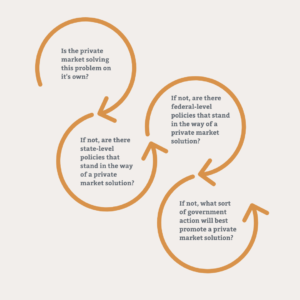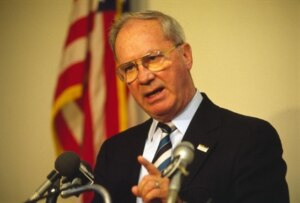First, Try Not Spending Money
Government spending on new programs often arises from the assumption that only the government can solve the big economic and social problems we face.
“If you put the Government in charge of Sahara Desert, in 5 years there would be a shortage of sand.” – Milton Friedman
I’m constantly amazed by the willingness of politicians to spend trillions of dollars of taxpayer money on any given problem, without regard for less expensive solutions.
Government spending on new programs often arises from the assumption that only the government can solve the big economic and social problems we face.
I fundamentally disagree with that assumption. Not only is it not the government’s job to solve problems, but entrepreneurs deliver solutions better and cheaper than bureaucrats ever could.
Governments should focus on enabling citizens to control their own lives, which would provide the maximum freedom for innovators, disruptors and entrepreneurs to do what they do best and solve society’s problems.
In my past job advising Montana’s Insurance Commissioner, I developed the following matrix to guide the agency’s policy decisions as a government regulator:

If more regulators embraced this decision process, I guarantee they would find that often the biggest barrier to the private market solution is the government itself – whether it be excessive regulations or bureaucratic inefficiency.
Correcting these barriers should be job #1 of policy makers and often costs nothing but political courage and effective leadership.
I hope that our leaders soon find the political courage to try breaking down government barriers before asking taxpayers to cough up more money for programs and subsidies.
Taxpayer’s wallets should be the last place politicians turn to, not the first.
For Liberty,
Kendall Cotton
. . .
The Latest
RIP Governor Stan Stephens
1. We learned this week that former Montana Governor Stan Stephens (1989-1992) has passed away at the age of 91. Lee Newspapers described the themes of Stephens’ term in office as: “trying to keep taxes low, rein in state spending and bring new business opportunities to Montana. He also held a hard line on being a gentlemen.” We certainly could use a little more of that spirit today.

Montana Saved Millions
2. On Monday, NASHP released a report showing that Montana’s State Employee Health Plan saved millions by embracing a type of value-based insurance design called Reference Based Pricing (RBP).
Our Take:
While common insurance plans try to shield consumers from costs and steer them towards “preferred providers,” RBP takes a radically different approach. It injects price transparency into healthcare by basing reimbursements on a set “reference price.” With the consumer on the hook for any charges above the reference price, this provides a strong incentive to shop for low-cost providers that provide good value. And to get the business of insurance consumers covered under a RBP plan, providers have an incentive to lower their prices. A win-win!
Montana’s success story shows the power of reforms that put patients in charge of their own healthcare decisions to help drive down costs.
Facial Recognition
3. Your face could be getting scanned daily by your government, without your knowledge or consent. A bombshell report from Buzzfeed this week revealed that several police departments in Montana utilize sophisticated facial recognition technology called Clearview AI without knowledge or oversight from the public – until now.
Our Take: Facial recognition is a tool that has amazing potential to make our lives better. Facial recognition has fun applications like the apps on snapchat that filter your face to give you wacky cat ears or make you look older or younger. However, in the hands of governments, this powerful technology can be abused – especially without proper public knowledge or oversight.
Montana policy makers need to dig into this issue.
